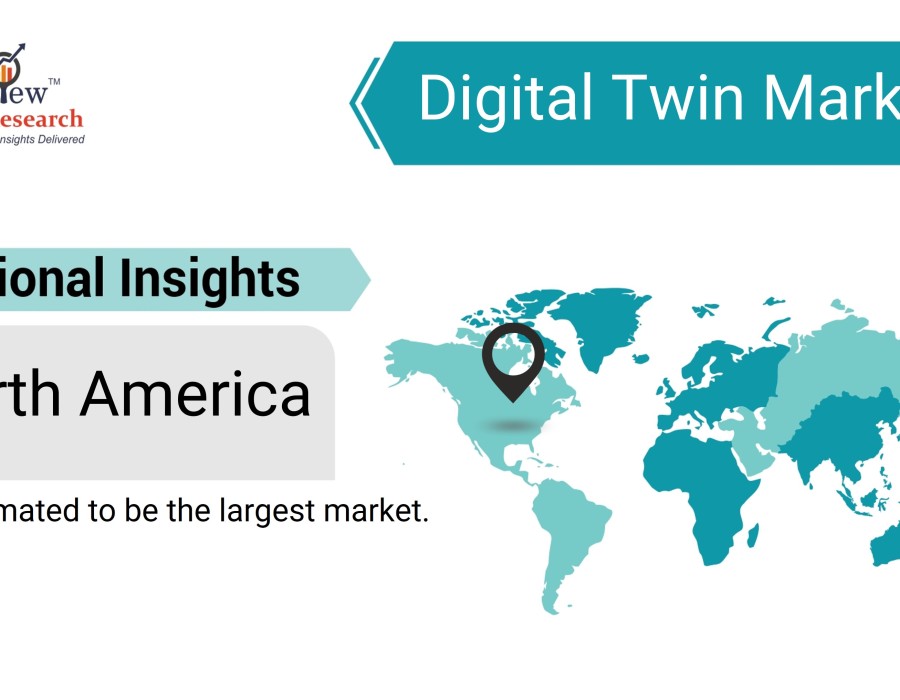According to the market research firm Stratview Research, the global Digital Twin market is predicted to exhibit a shift during 2023–2028. The report is segmented by Technology Type (IoT & IIot, Blockchain, Artificial Intelligence, and Machine Learning, Augmented Reality, Virtual Reality, and Mixed Reality; Big Data Analytics, and 5G), by Digital Twin Type (Product Digital Twin, Process Digital Twin, and System Digital Twin), by Industry Type (Aerospace & Defense, Automotive & Transportation, Home & Commercial, Healthcare, Energy & Utilities, Oil & Gas, and Others), and by Region (North America, Europe, Asia-Pacific, and Rest of the World).
Market Insights
The digital twin market was estimated at USD 10.36 billion in 2022 and is expected to grow at a CAGR of 44.01% during 2023-2028 to reach USD 92.44 billion in 2028.
What is a digital twin?
Digital Twin refers to a replica or a digital avatar of a living or non-living physical object. It serves as a proxy for the current condition of anything it represents. This helps in attaining real-time data with which, one can see the current progress or bottlenecks and plan ways to resolve or improve them. When a twin of a physical product is created and displayed digitally, smart sensors are used to collect and create real-time representation from the real product to the digital twin. This transferred data not only replicates the physical product but also mimics its behaviour.
COVID-19 IMPACT
The COVID-19 pandemic has positively impacted the global digital twin market. During the pandemic, major manufacturers used a variety of strategies to increase their market share in the broader marketplace, including product launches, product improvements, and R&D spending.
Market Dynamics
The digital twin market is driven by several factors, one of which is the increased demand for predictive maintenance and asset optimization solutions across industries. Below given are a few more drivers -
- Increased demand for predictive maintenance – Digital twins are used to monitor and predict the performance of assets in different industries. This helps to prevent unplanned downtime and reduce maintenance costs. According to General Electric Power (GE), leveraging digital twin solutions can help in reducing reactive maintenance in less than 1 year by 40%, reduced time to achieve outcomes by 75%, and can save up to $11 million by detecting and preventing failures.
- Adoption of Industry 4.0 – The fourth industrial revolution is characterized by the use of advanced technologies such as artificial intelligence, machine learning, and the Internet of Things (IoT). Digital twin technology plays a vital role in fulfilling various requirements of Industry 4.0, as they can be used to integrate and analyze data from these different technologies.
- Regulatory compliance requirements – In some industries, there are regulatory requirements that mandate the use of digital twins. For example, in the healthcare industry, digital twins can be used to simulate the performance of medical devices, which can help to ensure that they meet safety standards. The FDA approved the use of digital twins to simulate the performance of a new medical device, which helped to speed up the approval process.
- Growing Adoption in Multiple Industries: Owing to its benefits, digital twin technology has found applications across various industries, including manufacturing, healthcare, automotive, aerospace, energy, infrastructure, etc. This widespread adoption is driving market growth as more organizations recognize the benefits of digital twins in improving their operations, optimizing asset performance, and delivering better customer experiences.
What to expect from this report?
The report structure has been kept such that it offers maximum business value to the user. It provides vital insights into the market dynamics and enables strategic decision making for the existing market players as well as those willing to enter the market. The following are the key features of the report:
- Market structure: Overview, industry life cycle analysis, supply chain analysis.
- Market environment analysis: Growth drivers and constraints.
- Market trend and forecast analysis, Market segment trend.
- Competitive landscape and dynamics: Market shares, Product portfolios, New Product Launches, etc.
- Attractive market segments and associated growth opportunities.
- Emerging trends and Key success factors.
- Strategic growth opportunities for the existing and new players.
Critical Questions Answered in the Report
l What are the key trends in the Digital Twin market?
l How the market has grown in the last five years and what would be the growth rate in the next five years?
l What is the impact of COVID-19 on Digital Twin market?
l What are the key strategies adopted by the major vendors to lead in Digital Twin market?
l What is the market share of the top vendors?
Customisation of this study-
Stratview research offers custom research services across sectors. In case of any custom research requirement related to market assessment, competitive benchmarking, sourcing and procurement, target screening, and others, please send an inquiry at
About Stratview Research
Stratview Research is a trusted brand globally, providing high quality research and strategic insights that help companies worldwide in effective decision making. It is a global market intelligence firm providing a wide range of services including syndicated market reports, custom research, and sourcing intelligence across industries, such as Advanced Materials, Aerospace & Defense, Automotive & Mass Transportation, Consumer Goods, Construction & Equipment, Electronics and Semiconductors, Energy & Utility, Healthcare & Life Sciences, and Oil & Gas.
Contact: Stratview Research
E-mail: [email protected] Direct: +1-313-307-4176






Comments